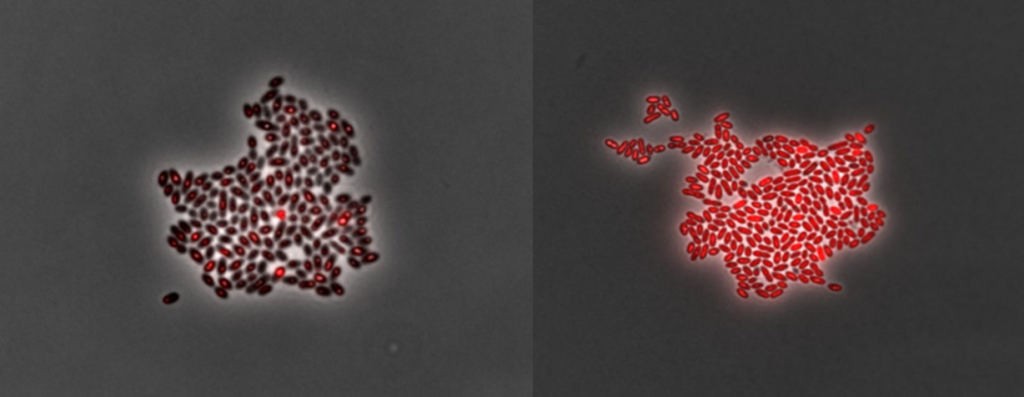
The latest discovery made by a student and I involves the bacterium Rhodobacter sphaeroides. Compared to the original ‘wild type’ strain (left), a mutant (right) produces nearly four times more PHB (which appears red after being stained with the PHB binding dye Nile Red).
Compared to the wild type, which produces varying levels from cell to cell, accumulation in the mutant is very high in virtually every cell. We are looking at publishing the data soon.
Also of great interest is whether this mutant of R. sphaeroides can use cheap fermentation sources such as agricultural waste products to produce PHB. Here, the strains were grown using a combination of acetate and malate as carbon sources.
Updated Sept. 09, 2021
